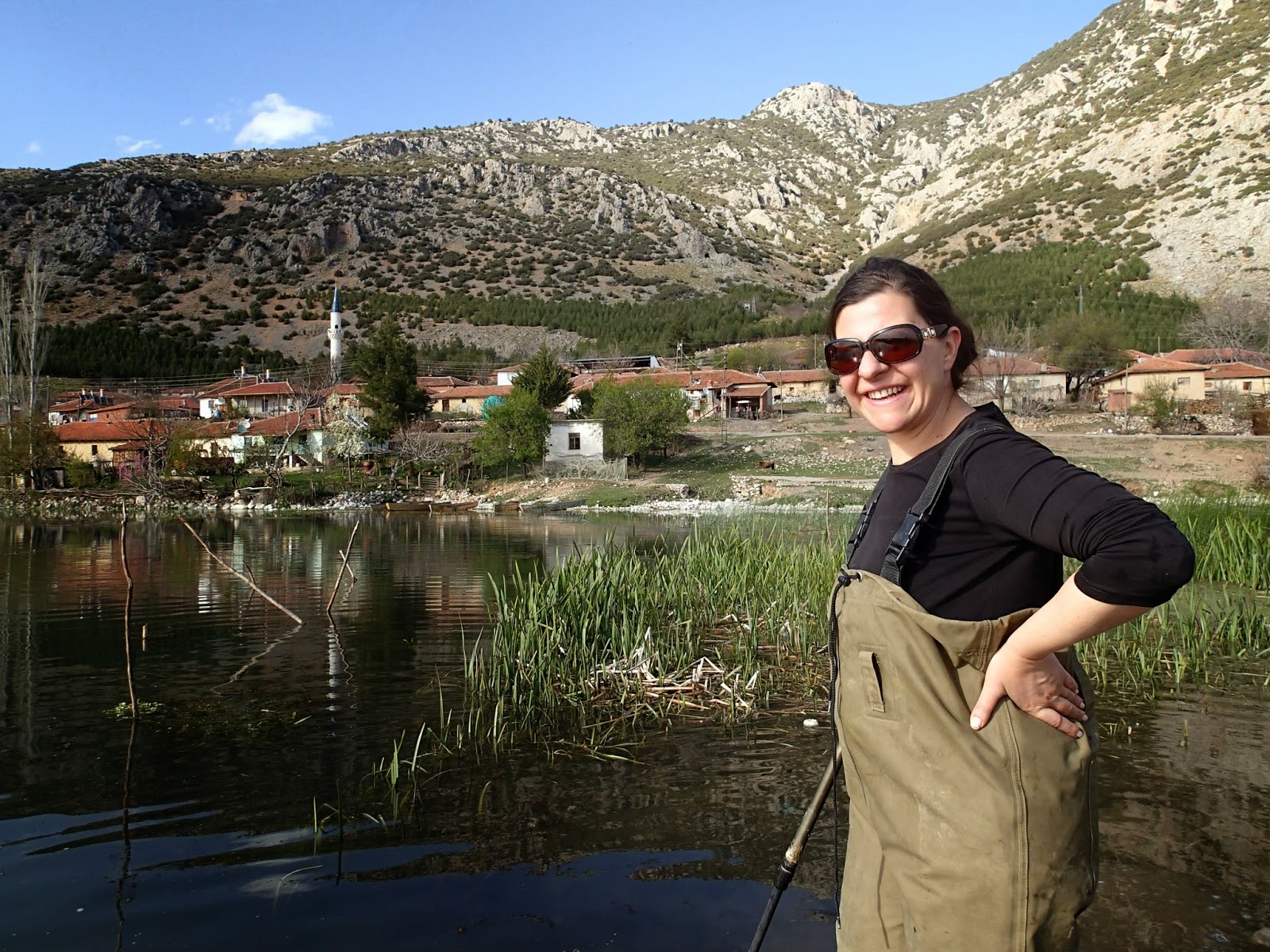March 26th 2014
In Greece we have several large inland lakes that are really neat and full of endemic fish. In Turkey there are lots more - whole 'lake districts' exist. And some of the lakes are really very beautiful and unique. So today I thought of sending you off to Isikli Lake (pronounced something like "Ishiklu"....). I visited this month with Turkish friends who are professional ichthyologists; I got a very subjective view.
To get there you should fly into the airport of Denizli - a pretty and modern town of half of million people near the famous site of Hierapolis, Laodikia, Pamukkale and other such ancient wonders. Then you rent a car - even at the airport - and follow the gps navigator to the north shore of the Lake. Its a very easy, peaceful and safe trip. All photos in this post are from the marshes further east of Isikli Lake proper, at Gokgul village (Goekguel = sky lake). The entire lake-marsh system is about 97 square kilometers. Its big and spacey, like being somewhere in Utah. I would not be recommending this if it was not well worth it. It is amazing!
First thing are the wondrous cold springs. Along the northern shores dozens of really cold waters seep through pebble beaches, flowing into crystal lake waters. The lake is high - up at 820 m. Its located below a limestone rocky mountain - Ak Dag (pronounced Akdaaa.... I was told).
Ok, what to see and do?
Its a designated IBA....Birds - bring binocs. Huge cow herds, rare endemic fishes, donkeys, pristine traditional villages..... The lake has fish resturants, Zander is served fried or grilled. And despite the Ak Party craziness, beer is still served at the "Family Restaurant"! You eat your fish, DRINK YOUR BEER, while watching the wild fishes through the crystal clear lake's surface. Gokgul is worth it.
I went 'fishing' (collecting and studying the fishes...of course) - a Euro-Turkish initiative supported this. This area is worthy of real conservation. It must be carefully protected for its spectacular biodiversity heritage - from landscape, to village culture, to tiny killifish. One unsettling change was a huge chanalization river engineering construction on Kufi stream - a waterway that enters Isikli. Otherwise, pollution also seems to be a problem. More research and care are urgently needed!
I thank the Turkish friendship that made the "work" possible. We had great help from University of Ankara and the University of Pamukkale colleagues. I urge all naturalists to visit Anatolia and to promote conservation, please mention that you are visiting to appreciate nature.....
 |
| East of Gokgul - total silence. The canal is deep, marshes spread out as far as the eye can see. |
 |
| Near the spring's inflow. Water is clear, full of plants, very very cold. We are electrofishing. |
 |
| Professor Cevher from Ankara knows lakes very well. |
 |
| Biologist Kaan from Ankara really loves these waters. |
 |
| Flat open country; cattle coming in for the evening. |
 |
| The limestone mountain, Ak Dag, drops into the lake and gives it snow-melt spring waters. |
 |
| The lake is shallow, 7 m at its deepest. Huge marshes surround the lake. Its a very quiet place. |
 |
| Gokgul village scene. Willows are comming into full leaf, Sparganium marshes still growing. |
 |
| Gokgul village scene with Kaan, Pinar and Cevher carrying nets and buckets. |
 |
| Anatolian Lakes are famous for their rare Killifish; this is Aphanius meandricus;the rare endemicIsikli Killifish. |
 |
| The local Killifish species competes with alien American Mosquito Fish in the lake; but fortunately the invasive's numbers were low now in early spring. |
 |
| An unidentified very young Cyprinid fish. The lake has some extremely localized range restricted endemics. |
 |
| A pregnant endemic Gudgeon. Gobio meandricus I assume. They were quite common. |
 |
| Rainbow Trout: An alien we did not expect to find in such numbers; the small fry we found show that the species is reproducing here. |
 |
| Rainbow Trout: Small fry found among pebble spring-fed areas: proof of reproduction in the wild. |
 |
| A beautiful loach: perhaps Cobitis fahiraea. |
 |
| Closer look at the Cobitis fahiraea -one of nine species collected at Gokgul. |
 |
| The ephemral Kufi stream that enters the lake (Ak Dag at L) is being channelized.... |
